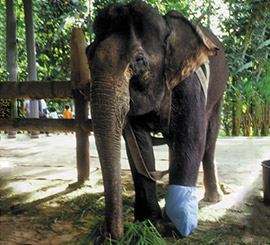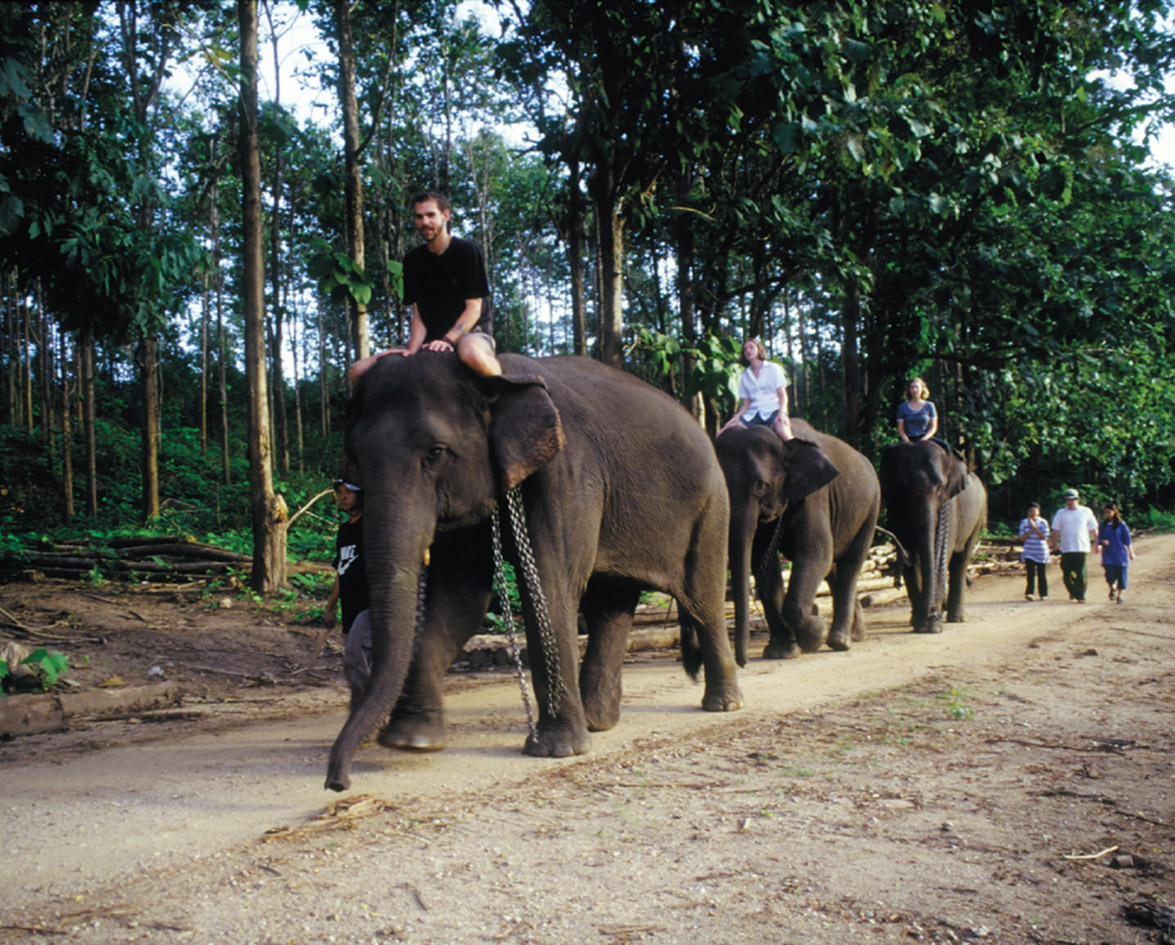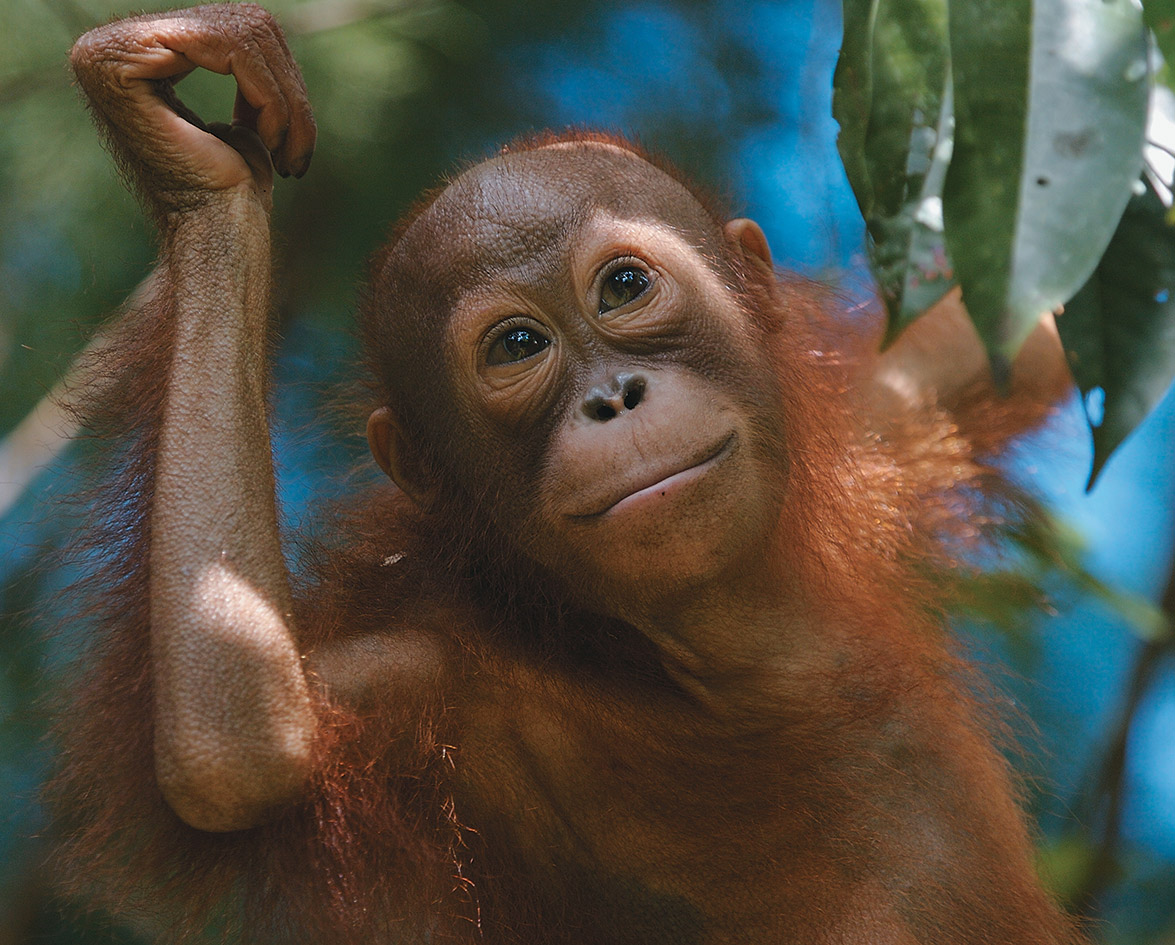This article is based on research conducted by Naomi Watt, Erin Ross and Aldea Pallard, three students who spent the fall of 1999 in Thailand as part of Langara College’s Pacific Rim Program. Their stories were compiled by Rob Howatson.
Thailand was built by elephants. These giant, reputedly sensitive creatures were the weapons of choice in times of war, the transport vehicles that travelled the trade routes, and the front-end loaders that hauled teak from the forests. At the turn of the twentieth century, an estimated 20,000 pachyderms were used as beasts of burden. Today only 3,000 remain in captivity. Half that number survives in the wild. Their population declines at an estimated rate of three per cent annually.
Yet the elephant legacy is visible everywhere in Thailand. Their likenesses grace the walls of Buddhist temples. Bronze elephant statues flank the entrance to the Grand Palace in Bangkok. Even today, if a so-called white elephant is found in the wild, Thai law dictates that the creature belongs to the king.
Elephants Suddenly Find Themselves Unemployed
In spite of this reverence, they are still poached for their ivory. Their jungle habitat was razed to accommodate an exploding human population. And in 1989, the Thai government delivered a crushing blow to the elephant work force when it banned logging. Thailand suddenly found itself with 3,000 unemployed behemoths and an entire community of jobless mahouts (elephant caretakers). Their prospects are bleak. As freelance journalist Leyla Alyanak put it, “Jobs are scarce for animals whose principal talent lies in rolling a log with their trunk.”
Many of the down-and-out handlers resort to busking with their elephants in the cities. They sell passers-by small bags of cucumbers that people feed to the animals. Pregnant women pay to walk beneath the pachyderms for good luck. Then there are the performances for tourists. One event featured a fashion show with multi-ton models wearing makeup, earrings and sunglasses as they lumbered down a catwalk.
Some people find these antics amusing; Bangkok authorities do not. Roaming elephants are banned from the city, yet mahouts continue to pass through the metropolis and periodically stage protests in the streets, asserting their right to work there.
In rural areas, farmer’s fields understandably tempt pachyderms. These are creatures who eat up to 250 kilograms of fruit or vegetables, or five per cent of their own body weight, each day. This provokes some farmers to react as one group did on a pineapple plantation in 1998. They set poison for the mammoth “pests.”
With so little space left in the nation, it is no surprise that some people employ the tight-leash method to care for their three-metre-tall pets. This was the case in 1996 when a 23-year-old bull elephant named Phlai Petch escaped from a tree to which he had been shackled for years. The tree stood in a temple, and once outside the compound, the elephant wandered into a nearby residential area. When police arrived the bull panicked. Some cars were damaged. The police fired a 100-round volley that eventually killed the animal, but not, some onlookers say, before Phlai Petch tried to return to his tree.
Elephant Handlers Are A Dying Breed
Some of these ugly incidents could be avoided if there were more experienced mahouts available, but like the Thai elephant, mahouts are a dying breed. The financial incentive to become a lifetime handler ended with the timber trade. It takes 20 years to produce a master mahout. These are truly skilled individuals who can anticipate an elephant’s every move.
Master mahouts seem to have no problem manoeuvring them. When riding atop the animal’s neck they steer the creature with their feet or nudge it with an iron hook, applying pressure to one of 85 different points on the elephant’s hide. This is how they “operate” the Asian pachyderm as a forklift. Elephants are remarkably sure-footed, quiet walkers. They can outperform tractors on steeply-sloped, densely-treed terrain. They can lift 100 kilograms with their trunks and pull a half tonne, but only if they are under the supervision of a quality mahout and not being overworked.
This is less likely to be the case in this era of illegal logging in Thailand. The men controlling log-poaching elephants will work their animals on dangerous inclines, for impossible durations, at unreasonable speeds. They often hack at the animals with knives and spears to keep the work moving one step ahead of the park rangers. Log poachers will also mix amphetamines into the banana meals of their trunked-crew. The elephants become addicted. They suffer many of the same symptoms that human methamphetamine addicts experience. They become aggressive, despondent, and accident-prone.
The Elephant Hospital
If an abused elephant is lucky, it will be seen by a veterinarian at the world’s only elephant hospital. The facility is located on the grounds of the Thai Elephant Conservation Centre near Lampang, in the northern part of the country. The doctors run a mobile clinic. They drive through villages looking for malnourished, infected, and addicted pachyderms. A typical call saw Dr. Preecha Puangkham treating a 60-year-old female, his entire forearm thrust into a cyst the size of a man’s head as he cleaned out the pus. The owner confessed to overworking the animal.
Elephants also stagger into the hospital itself. The most famous case is Motala, a 2.7 tonne patient that stepped on a landmine while logging in Myanmar (formerly Burma). The animal managed to hobble out of the jungle and was trucked to the hospital. She underwent an operation in which four of her toenails and a five-inch-thick triangular piece of her foot were removed. Surgeons worked around her as she lay on a trampoline-like cot fashioned from fire hoses. After the procedure, Motala was fitted with a harness connected to a crane. The crane helped her stand upright and took some pressure off her injured limb. She was eventually fitted with a prosthetic. Donations flowed to elephant conservation groups as the story unfolded before the world media.

Dealing With The Crisis
Efforts are underway to deal with the elephant crisis in Thailand. In addition to the hospital and conservation centre near Lampang, there is parkland set aside for wild elephants and projects to re-introduce animals into the jungles. These initiatives offer some hope for the plight of pachyderms in Southeast Asia. Hopefully they are not too late for these giants, said to be so sensitive that they mourn the loss of loved ones and cry real tears.
Visit the Thai Elephant Conservation Centre for more information











